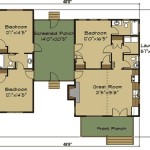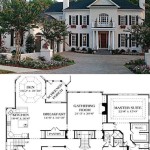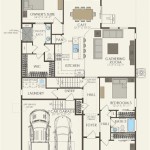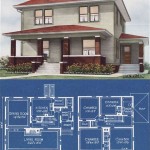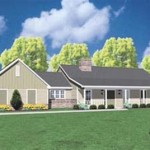Floor Plans For Tiny Houses On Wheels NYC: Maximizing Space in the City That Never Sleeps
The allure of tiny house living has extended beyond rural landscapes, captivating urban dwellers seeking minimalist lifestyles and financial freedom. In New York City, where space is a premium and cost of living is exorbitant, tiny houses on wheels (THOWs) present a unique, albeit challenging, housing solution. Designing effective floor plans for THOWs in NYC requires careful consideration of local regulations, spatial constraints, and individual needs. This article explores the key elements of designing and implementing floor plans for tiny houses on wheels within the context of New York City, focusing on optimizing space, functionality, and compliance.
The concept of a THOW in NYC necessitates a departure from conventional housing norms. Zoning regulations, parking restrictions, and the practicalities of connecting utilities are significant hurdles. However, the potential rewards – reduced living expenses, increased mobility, and a smaller environmental footprint – motivate many to explore this alternative housing option. The floor plan is the cornerstone of a successful THOW, dictating the living experience and usability of the limited square footage.
Understanding NYC Regulations and Legal Considerations
Navigating the regulatory landscape of NYC is paramount before embarking on a THOW project. Currently, the city lacks specific zoning classifications for THOWs. Therefore, they are often categorized as recreational vehicles (RVs) or mobile homes. However, prolonged occupancy in a THOW on private property might violate local zoning laws related to minimum dwelling sizes and permanent residential structures. Parking regulations further restrict where a THOW can be stationed. Street parking is generally prohibited for extended periods, and private RV parks within city limits are scarce. Renting space on private land presents another option, but legality depends on local zoning ordinances and landowner permissions. Consulting with legal professionals specializing in real estate and zoning is highly recommended to ensure compliance and avoid potential legal complications.
Beyond zoning, building codes and safety standards must be considered. Although THOWs are technically vehicles, adhering to residential building codes related to electrical wiring, plumbing, and structural integrity enhances safety and facilitates potential future connections to utilities. Obtaining certifications from organizations like the National Organization for Alternative Housing (NOAH) or the Recreational Vehicle Industry Association (RVIA) can demonstrate compliance with industry standards and potentially ease insurance and financing processes. Furthermore, fire safety measures, including smoke detectors, carbon monoxide detectors, and fire extinguishers, are crucial in the confined space of a THOW.
The legal status of a THOW in NYC remains ambiguous, requiring proactive research and communication with local authorities. Understanding and adhering to existing regulations, while advocating for supportive policies, is essential for the sustainable adoption of THOWs as a viable housing option in the city.
Optimizing Space and Functionality in a Tiny House Floor Plan
Given the limited square footage available in a THOW, every inch must be utilized efficiently. Strategic space planning involves prioritizing essential functions, employing multi-functional furniture, and maximizing vertical space. A well-designed floor plan should seamlessly integrate living, sleeping, cooking, and bathroom areas while maintaining a sense of openness and comfort.
Storage solutions are critical in a tiny house. Built-in storage under beds, benches, and stairs maximizes otherwise unused space. Vertical shelving and cabinets, reaching from floor to ceiling, provide ample storage without consuming valuable floor space. Fold-down tables and desks serve multiple purposes, converting from dining areas to workspaces as needed. Murphy beds or convertible sofas offer flexible sleeping arrangements, freeing up living space during the day. Utilizing the space above doorways for shelving or storage compartments is another effective strategy.
The kitchen and bathroom, often the most space-intensive areas, require careful consideration. Compact appliances, such as a combination microwave and convection oven or a two-burner induction cooktop, save space without sacrificing functionality. A composting toilet reduces water consumption and eliminates the need for a septic system. A shower with a smaller footprint or a wet bath, where the entire bathroom is designed to get wet, conserves space. Employing light colors and reflective surfaces throughout the THOW enhances the sense of spaciousness. Strategically placed mirrors can create the illusion of larger rooms and maximize natural light.
Natural light is crucial for creating a comfortable and inviting living environment. Incorporating large windows and skylights maximizes natural light penetration. Window placement should consider privacy and energy efficiency. Using sheer curtains or blinds allows natural light to filter through while maintaining privacy. Strategic placement of lighting fixtures, including LED strip lights and overhead lighting, supplements natural light and creates a warm ambiance. Ultimately, a well-designed floor plan optimizes space by integrating multi-functional elements, maximizing vertical storage, and prioritizing natural light.
Designing for Sustainability and Energy Efficiency
Beyond space optimization, sustainable design principles are particularly relevant in the context of THOWs. Given their compact size, THOWs have the potential to minimize their environmental impact through energy-efficient appliances, renewable energy sources, and sustainable building materials. Incorporating these elements into the floor plan and overall design enhances the sustainability and long-term viability of a THOW in NYC.
Energy efficiency starts with insulation. Proper insulation minimizes heat loss in winter and heat gain in summer, reducing the need for heating and cooling. Using high-performance insulation materials, such as spray foam or rigid foam board, can significantly improve energy efficiency. Sealing air leaks around windows, doors, and other openings further reduces energy consumption. Energy-efficient windows with low-E coatings minimize heat transfer and block harmful UV rays. Utilizing LED lighting throughout the THOW reduces energy consumption and prolongs bulb life.
Renewable energy sources, such as solar panels, offer a sustainable alternative to traditional electricity. Installing solar panels on the roof of the THOW can generate electricity for lighting, appliances, and other electrical needs. A battery storage system stores excess energy generated by the solar panels for use during periods of low sunlight. Alternatively, connecting the THOW to the utility grid allows for net metering, where excess energy is sold back to the grid. Rainwater harvesting systems collect rainwater for non-potable uses, such as watering plants or flushing toilets. Composting toilets reduce water consumption and minimize reliance on municipal sewer systems.
Selecting sustainable building materials minimizes the environmental impact of the THOW. Using reclaimed wood, recycled metal, and bamboo flooring reduces reliance on virgin materials. Choosing low-VOC paints and finishes improves indoor air quality. Incorporating natural ventilation strategies, such as operable windows and vents, reduces the need for mechanical ventilation. Designing a sustainable THOW requires a holistic approach, considering energy efficiency, renewable energy sources, and sustainable building materials. Integrating these elements into the floor plan and overall design creates a living space that is both environmentally friendly and economically viable.
In summary, designing floor plans for tiny houses on wheels in NYC requires a multifaceted approach that addresses legal considerations, spatial optimization, and sustainable design principles. By carefully navigating zoning regulations, maximizing space utilization, and incorporating energy-efficient technologies, individuals can create functional and sustainable living spaces within the challenging urban environment of New York City.

Tiny House Plans The Project

The 115 Sq Ft Weller Tiny House On Wheels By Jay Shafer Floor Plans Small Company

10 X 20 Tiny Home Designs Floorplans Costs And Inspiration The Life

Free Tumbleweed Diy Tiny House Plans Houses

Tiny House Plans The Project

Free Tumbleweed Diy Tiny House Plans Houses

12 X 32 Tiny Home Designs Floorplans Costs And More The Life
Tiny Houses That Ll Have You Trying To Move In Asap

10 Tiny Houses On Wheels Portable Homes And Trailers

I Live In A Backyard Tiny Home On Wheels For 725 Month Here S Why M The Happiest Ve Ever Been

